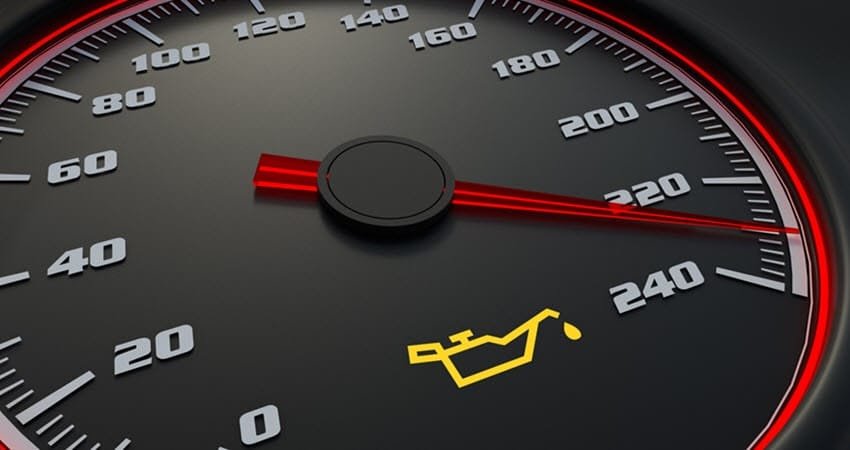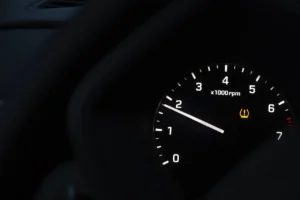Oil pressure plays a critical role in maintaining the health of a vehicle’s engine. It ensures that all moving parts receive proper lubrication, preventing excessive wear and overheating.
If the oil pressure is too high or too low, it can indicate potential engine issues that could lead to costly repairs if not addressed in time.
For most vehicles, normal oil pressure typically ranges between 25 to 65 psi (pounds per square inch) when the engine is running. However, the ideal pressure depends on various factors such as engine type, oil viscosity, and temperature.
Understanding how oil pressure works, what affects it, and how to monitor it can help prevent engine damage and extend the lifespan of your car.
This guide will cover everything you need to know about normal oil pressure, warning signs of pressure problems, and how to maintain a healthy oil system.
Understanding Oil Pressure and Its Importance
What Is Oil Pressure?
Oil pressure refers to the force at which engine oil is circulated through the lubrication system. The oil pump generates this pressure, pushing oil through passages, bearings, and moving components to reduce friction and dissipate heat.
A stable oil pressure level ensures that the engine runs smoothly and efficiently. If pressure drops too low, it may lead to insufficient lubrication, increased friction, and engine overheating.
On the other hand, excessively high pressure could indicate a clogged oil passage, faulty pump, or incorrect oil viscosity.
Why Is Oil Pressure Important?
- Lubrication – Prevents metal-to-metal contact, reducing wear.
- Cooling – Helps absorb and disperse heat generated by moving engine parts.
- Cleaning – Removes dirt, debris, and metal particles from internal components.
- Preventing Engine Damage – Ensures vital engine parts receive sufficient lubrication to function properly.
What Is Considered Normal Oil Pressure?
Oil pressure varies depending on whether the engine is idling, accelerating, or running at high speeds. The following values are generally considered normal:
| Condition | Normal Oil Pressure (PSI) |
| Idle (Warm Engine) | 20 – 30 psi |
| Driving at Moderate Speed | 40 – 50 psi |
| High RPM or Highway Driving | 50 – 65 psi |
| Cold Start (Before Warm-Up) | 50 – 70 psi (briefly) |
These values can vary slightly between different makes and models. Checking the owner’s manual for the manufacturer’s recommended range is the best way to determine the ideal oil pressure for your specific vehicle.
Factors That Affect Oil Pressure
Several factors influence oil pressure, including engine condition, oil type, and temperature. Understanding these factors can help diagnose potential issues before they become major problems.
Engine Temperature
- When an engine is cold, oil is thicker, leading to temporarily higher pressure.
- As the engine warms up, the oil thins out, and pressure drops to normal levels.
Oil Type and Viscosity
- Using oil that is too thick (high viscosity) can cause excessive pressure, reducing flow.
- Using oil that is too thin (low viscosity) may result in inadequate pressure, leading to engine wear.
Oil Quality and Level
- Old or dirty oil can clog passages and reduce lubrication efficiency.
- Low oil levels decrease pressure, leading to insufficient lubrication.
Condition of the Oil Pump
- A worn-out oil pump may struggle to maintain proper pressure.
- A clogged or malfunctioning relief valve can cause pressure fluctuations.
Clogged or Leaking Oil Passages
- Sludge buildup or carbon deposits can obstruct oil flow, increasing pressure.
- Leaks in gaskets or seals can cause oil loss and lower pressure.
Warning Signs of Abnormal Oil Pressure
Monitoring your oil pressure gauge or warning light can help detect problems early. Some common symptoms of oil pressure issues include:
Low Oil Pressure Symptoms
- Oil warning light on dashboard
- Knocking or ticking noises from the engine
- Overheating due to increased friction
- Loss of engine power or rough idling
- Oil level is low when checked with a dipstick
High Oil Pressure Symptoms
- Oil pressure gauge reading above normal levels
- Oil leaks due to excessive pressure
- Engine running hotter than usual
- Check engine light may turn on
Ignoring these warning signs can lead to serious engine damage, requiring expensive repairs.
How to Check Oil Pressure?
Regularly monitoring oil pressure helps ensure your engine stays in good condition. Here’s how you can check it:
Using the Oil Pressure Gauge (Dashboard Reading)
- Many cars have a built-in oil pressure gauge that provides real-time readings.
- Check the gauge while idling and driving to ensure the values stay within normal range.
Using a Mechanical Oil Pressure Gauge
If you suspect the built-in gauge is inaccurate, a manual oil pressure test can provide precise readings.
Steps to Check with a Manual Gauge:
- Turn off the engine and let it cool.
- Locate the oil pressure sending unit and remove it.
- Attach the mechanical gauge to the oil port.
- Start the engine and let it idle.
- Note the readings at idle and higher RPMs.
- Compare with normal oil pressure values for your vehicle.
If the readings are too high or too low, further investigation may be needed.
What to Do If Oil Pressure Is Too Low or High?
Fixing Low Oil Pressure
- Check and refill oil if the level is low.
- Use the correct oil viscosity recommended by the manufacturer.
- Inspect for leaks in gaskets or seals.
- Replace a failing oil pump if necessary.
- Clean or replace clogged oil passages and filters.
Fixing High Oil Pressure
- Ensure oil is not too thick (check viscosity).
- Replace a faulty oil pressure relief valve.
- Flush the oil system to remove blockages.
- Inspect and replace a damaged oil filter.
Preventing Oil Pressure Problems
To keep oil pressure within a safe range, follow these maintenance tips:
- Check oil levels regularly and top up as needed.
- Change oil and filter as per the manufacturer’s schedule.
- Use the correct oil viscosity for your engine.
- Inspect for oil leaks and fix them promptly.
- Monitor dashboard warning lights and act quickly if they illuminate.
Proper oil maintenance is one of the easiest ways to extend engine life and prevent costly breakdowns.
Understanding normal oil pressure and how to maintain it is essential for a healthy engine. Most vehicles should have an oil pressure between 25 to 65 psi, but this can vary depending on factors like temperature, oil type, and engine condition.
Monitoring warning signs, checking oil levels, and performing regular maintenance can help keep your car running smoothly. If you notice abnormal oil pressure readings, addressing the issue early can prevent major engine damage.
By keeping up with oil changes, using the correct viscosity, and checking for leaks, you can ensure that your vehicle remains reliable for years to come.





